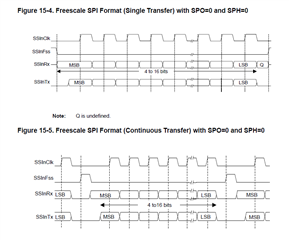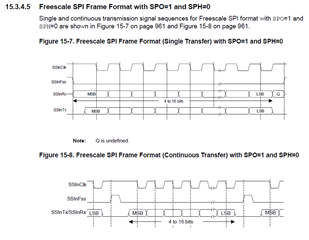I am trying to figure out if were to "activate" the SSI modules for SPI use, would it be possible to put the clock low during a portion of my code then set it high after I have gone through my process?
My example code is below of what i am thinking. I have omitted most of the code as i just would like to see if it is possible to do what is highlighted in yellow. Also, toward the end of the example code i showed the initialization of the SSI1 module but omitted the entire process to make the message smaller.
For instance:
// Using SSI1 for SPI comm protocol on PORTD
int main(void)
{
...
...
{
GPIO_PORTD_DATA_R &= ~0x01; // TO SET PORTD 0 SSI1 Clock low
...
...
...
GPIO_PORTD_DATA_R |= 0x01; //SET PORTD PIN 0 SSI1 Clock high
}
}
void init_SSI1(void)
{
SYSCTL_RCGCSSI_R |= 2; //enable clock to SSI1
SYSCTL_RCGCGPIO_R |= 8; //enable clock to GPIOD for SSI1
.....
.....
.....
}



